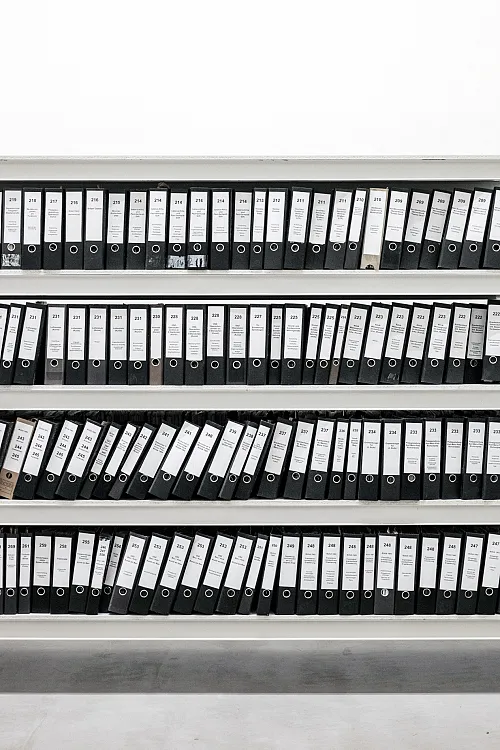A. BACKGROUND
Following the Government’s Law Proposal no. 51/XV/1 (“Law Proposal no. 51/XV”) on the transposition of Directive (EU) 2019/789 of the European Parliament and of the Council of 17 April 2019 (“Directive (EU) 2019/789”), Law no. 7/2023 authorizing the Government to legislate on the matters covered by that Directive was published on the 27th of February of this year.
It should be noted that Directive (EU) 2019/789, on copyright and related rights applicable to certain online transmissions, sets June 7th, 2021, as the deadline for its transposition in Member States and, therefore, the Portuguese State has been in a situation of non-compliance for almost two years.
The draft decree-law that the Government presented at the beginning of the year to transpose Directive (EU) 2019/789 was subject to public consultation, a phase that ended on March 7th, 2023. From the analysis of this project, the decree-law intends, inter alia, to:
- Define and change concepts, such as “ancillary online service” and “retransmission”, in order to cover other technical means of distribution of television signals besides microwave and “cable retransmission” systems;
- To establish the conditions for the applicability of the country of origin principle to ancillary online services for the purposes of determining the applicable law on copyright and related rights and fixing the amount of remuneration due for related rights;
- Establish the regime for the exercise of retransmission rights by rights holders other than broadcasters;
- Extend the regime of mandatory collective management to all services falling under the concept of “retransmission”, ensuring that rightsholders of copyright and related rights are adequately remunerated for the retransmission of their works and other protected subject-matter;
- Establishing the applicability of the civil and commercial mediation regime to situations of lack of agreement between one or more collecting societies for copyright and related rights or one or more broadcasting organizations and one or more operators of a retransmission service regarding the conditions of authorization for the retransmission of broadcasts;
- Define the concept of “direct injection” and establish the legal regime applicable to programme services covered by that concept.
One of the most interesting and innovative aspects of the draft decree-law is precisely this regime of direct injection, which derives from Article 8 of Directive (EU) 2019/789. This topic has hardly been discussed in Portugal, which is surprising since this technique of transmitting television content is currently the predominant one in national territory. In fact, according to an economic study, released in 2017,1 on the distribution of TV channels in the European Union (“EU”), the following conclusions were reached: (i) TV programming signals were overwhelmingly transmitted through the direct injection method, and this technical method was the most popular in Europe (with 78% of channels delivered to general TV platforms and 87% to pay-TV platforms); and (ii) 79% of all cross-border retransmissions were carried out by direct injection.
B. DIRECT INJECTION – DEFINITION AND GENERAL PRINCIPLES
Direct injection consists of a technique of transmitting programme-carrying signals in which broadcasting organizations transmit those signals directly to distributors, without making them simultaneously available to the public.
According to Directive (EU) 2019/789, that signal transmission mechanism is treated as a single act of communication to the public, in which both the broadcasting organization and the signal distributor participate with their respective contributions. Consequently, according to the European lawmaker, the broadcasting organization and the signal distributor must obtain authorization from the holders of copyright and related rights to carry out this single act of communication to the public.
The introduction of this solution in Directive (EU) 2019/789 had the clear purpose of remedying the legal uncertainty surrounding the obtaining of intellectual property rights when using the direct injection mechanism by the broadcasting organization and signal distributor.
C. HISTORICAL BACKGROUND – CASE C-325/14 OF THE CJEU
The judgment of the Court of Justice of the European Union (“CJEU”) of 19 November 2015, in Case C-325/14 (SBS Belgium NV (“SBS”) vs. Belgische Vereniging van Auteurs, Componisten en Uitgevers (“SABAM”)), demonstrated the need for clear rules regarding the phenomenon of direct injection, in particular in cases where a signal distribution operator receives the signals of a channel over a “closed” telecommunications line, rather than receiving the terrestrial or satellite signals from a broadcasting organization.
The ruling also addressed the question of the responsibility of the broadcasting organization and the distributor (who makes the signal available to its subscribers) to obtain authorizations from the holders of copyright and related rights.
The case began with an action brought by SABAM before the competent court in Brussels, in which it claimed royalties of almost EUR 1 million from the broadcaster SBS. SABAM claimed that SBS needed to obtain specific authorization from the copyright holders to broadcast its programming using the direct injection method and, therefore, that the abovementioned amount was due to it.
In the context of these proceedings, the Brussels court referred the following question to the CJEU: Does a broadcaster that transmits its programmes exclusively by means of the direct injection technique perform an act of communication to the public?
After due reflection, the CJEU considered that SBS was not communicating works to the public. According to the same European court, distributors provided an autonomous service by transmitting the signal to their subscribers. On the other hand, subscribers to the private service paid the subscription fee to the distributors, and the former could not access the signal without transmission by the latter. The CJEU thus concluded that the “public” concerned in these direct injection cases were the subscribers and the distributors were the entities that communicated the programmes (which contain copyright-protected content) to the public. Consequently, in a situation of direct injection, SBS was involved in the chain but did not communicate the television works to the public. The case law in this case seems to advocate a model where only the distributors will have to pay for the use of copyright and related rights.
However, the CJEU distinguished these cases from situations where the distributor only provides a technical service to the broadcaster (as is the case, for example, in Portugal, with the digital terrestrial television (“DTT”) service). In this scenario, since the distributor merely makes its technical means available and does not charge subscribers for the service, it is considered to be the broadcaster itself that carries out the communication to the public.
D. THE NEW LEGAL REGIME
Article 8 of Directive (EU) 2019/789 stipulates the following points:
- The process by which a broadcasting organization transmits its programme-carrying signals via a private line to its distributors (in such a way that the programme-carrying signals are not simultaneously accessible to the public during that transmission) corresponds to a single act of communication to the public;
- Both the broadcasting organization and the signal distribution operator are responsible for their respective contributions to that act of communication to the public, both having a duty to obtain the necessary authorizations from the rightsholders.
Given that the transposition of this provision is mandatory, the above-mentioned rules were included in the draft decree-law presented by the Portuguese Government. Additionally, the draft decree-law includes the provisions of Recital 20 of Directive (EU) 2019/789, namely that this act of communication to the public should not give rise to joint liability between the broadcaster and the signal distributor.
It is important to note that although Article 8 of the draft decree-law does not mention it, reference to Recital 20 of Directive (EU) 2019/789 clarifies that if the role of the signal distributor is merely to provide a technical service to the broadcaster, only the broadcasting organization will be liable for the act of communication to the public.
Furthermore, under Directive (EU) 2019/789, Member States are free to determine, at national level, the way authorizations are obtained from rightsholders, including the payments to be made to them for the exploitation of their works by (i) broadcasters and (ii) signal distributors.
The Directive also leaves it to the discretion of Member States as to whether signal distributors in their respective territories can benefit from a mandatory collective rights management mechanism (for the collection and distribution of revenues collected in this context). In the draft decree-law presented by the Government, the latter proposes that the authorization to communicate to the public by direct injection constitutes an exclusive right of the holders of copyright and related rights which may be obtained by means of an individual contract or through an agreement entered with collective management entities. This means that the Portuguese Government has chosen not to propose compulsory collective licensing.
The draft decree-law also states that collective agreements whose object is the exercise of this right of direct injection are extended to all rightsholders belonging to the category represented by the collective management entity in question, unless the rightsholders expressly exclude the extension of such agreements to their works (i.e., opt-out).
E. CONCLUSIONS
Adopting a slightly different position from that upheld by the CJEU in SBS v SABAM, the European legislator wanted to take advantage of Directive (EU) 2019/789 to ensure that both the broadcaster and the distributor will share the responsibility of obtaining the necessary authorizations from the holders of copyright and related rights when their works and performances are used in programmes transmitted through direct injection.
This amendment is extremely relevant since, nowadays, in Portugal, television programmes are mostly transmitted through the technique of direct injection. That is, currently, national broadcasters no longer broadcast their programs directly to the public through traditional means (i.e., over the airwaves), having adopted other more modern technologies for content transmission.
On the other hand, depending on how the rules are implemented in Portugal, the new regime of direct injection may require a thorough review of the existing contracts between rightsholders (or their representatives), on the one hand, and broadcasters and distributors, on the other hand.2 The practices that have existed for more than two decades in the audiovisual content distribution sector will certainly undergo some changes, and there is not yet much visibility on the economic impact that this will have on the major stakeholders. The final version of the diploma that will transpose Directive (EU) 2019/789 into national law is, therefore, awaited with great expectation.
__________________________
1 The study was based on data collected by Ampere Analysis in 2016 and hosted by AGICOA (Association of International Collective Management of Audiovisual Works) and SAA (Society of Audiovisual Authors).
2 Under the Directive, existing contracts governing authorizations for acts of communication to the public remain unchanged for six years from the entry into force of the Directive (until 7 June 2025).


